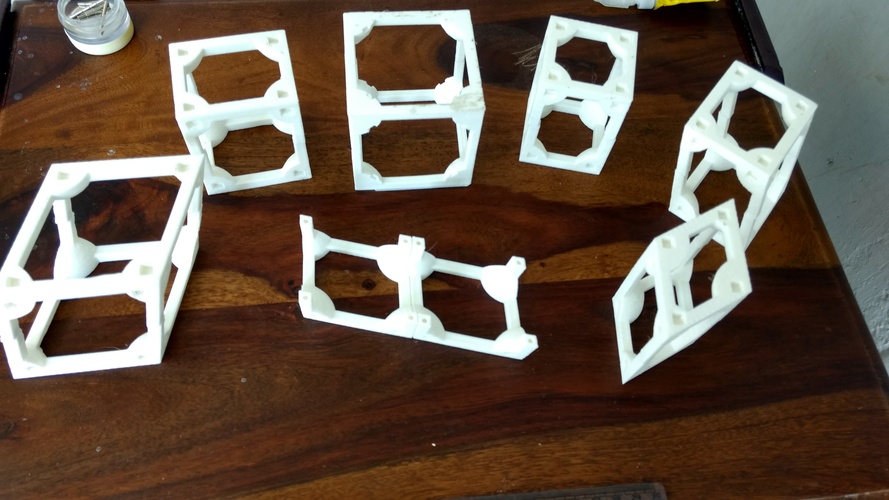
Crystal systems
pinshape
A solid grasp of crystallography's fundamentals is essential to comprehend most chemistry, physics, and biological structures and phenomena. Crystals are divided into seven distinct systems: triclinic, monoclinic, orthorhombic, tetragonal, trigonal, hexagonal, and cubic. These systems differ based on the dimensions of vectors a, b, and c, as well as the angles between them, alpha, beta, and gamma. A clear understanding of crystallography's basics is essential to comprehend most chemistry, physics, and biological structures and phenomena. The seven crystal systems - triclinic, monoclinic, orthorhombic, tetragonal, trigonal, hexagonal, and cubic - are defined by the dimensions of vectors a, b, and c, as well as the angles between them: alpha, beta, and gamma. The designs presented can be easily printed and assembled into seven crystal systems. Each unit cell is divided in half for easy printing without requiring any supporting material. Understanding crystallography's basics is crucial to comprehend most chemistry, physics, and biological structures and phenomena. The seven crystal systems - triclinic, monoclinic, orthorhombic, tetragonal, trigonal, hexagonal, and cubic - are defined by the dimensions of vectors a, b, and c, as well as the angles between them: alpha, beta, and gamma. The designs presented can be easily printed and assembled into seven crystal systems. Each unit cell is divided in half for easy printing without requiring any supporting material. We have provided voids that can hold magnets. Two types of voids are available - one type fits 2mm x 5mm cylindrical magnets, while the other type fits 5mm x 5mm x 2mm cuboid magnets. After printing the parts, it's easy to insert magnets into these voids and glue them. These magnets help a visually challenged learner assemble the pieces into full unit cells and super cells. Magnets are not necessary; one can also use glue, connectors, or any other fastening options to join two pieces together. A clear understanding of crystallography's basics is essential to comprehend most chemistry, physics, and biological structures and phenomena. The seven crystal systems - triclinic, monoclinic, orthorhombic, tetragonal, trigonal, hexagonal, and cubic - are defined by the dimensions of vectors a, b, and c, as well as the angles between them: alpha, beta, and gamma. The designs presented can be easily printed and assembled into seven crystal systems. Each unit cell is divided in half for easy printing without requiring any supporting material. We have provided voids that can hold magnets. Two types of voids are available - one type fits 2mm x 5mm cylindrical magnets, while the other type fits 5mm x 5mm x 2mm cuboid magnets. After printing the parts, it's easy to insert magnets into these voids and glue them. These magnets help a visually challenged learner assemble the pieces into full unit cells and super cells. Learning objectives include understanding the dimensions of each unit cell through touch and grasping the differences between seven crystal systems. The learner also gains insight into how multiple unit cells stack together and how a periodic system evolves.
With this file you will be able to print Crystal systems with your 3D printer. Click on the button and save the file on your computer to work, edit or customize your design. You can also find more 3D designs for printers on Crystal systems.
